MusiDevo
- Jay EuDaly

- Jul 14
- 4 min read
Updated: Jul 14
Consider the implications of this print ad from 1967:

The first thing that jumps out at me is that the marketing experts in 1967 believed so many people could read music, or had respect for being able to read music, that it was actually a good marketing strategy to use a piece of sheet music in an ad!
I got my first guitar in 1966 and, as far as I know, guitar tablature did not exist then. The “Mel Bay Book 1” guitar method that came with my guitar had music notation and fretboard diagrams.
I am not a fan of TAB; I believe it has contributed to the general dumbing-down of guitarists. I wrote about this in detail in Inbred Guitar Culture.
I've made my position on TAB very clear:
By the mid '70's, sheet music was part of the packaging among certain Jazz record labels:
Paul Desmond Quartet - 1975. Double live album. This is the record that got me into Ed Bickert, one of my all-time favorite guitarists. This package has two pages of liner notes, written by Paul Desmond himself, technical details on the recording and a stereo field diagram as well as a chart for “Wendy” - a Paul Desmond original. Musical literacy is assumed.
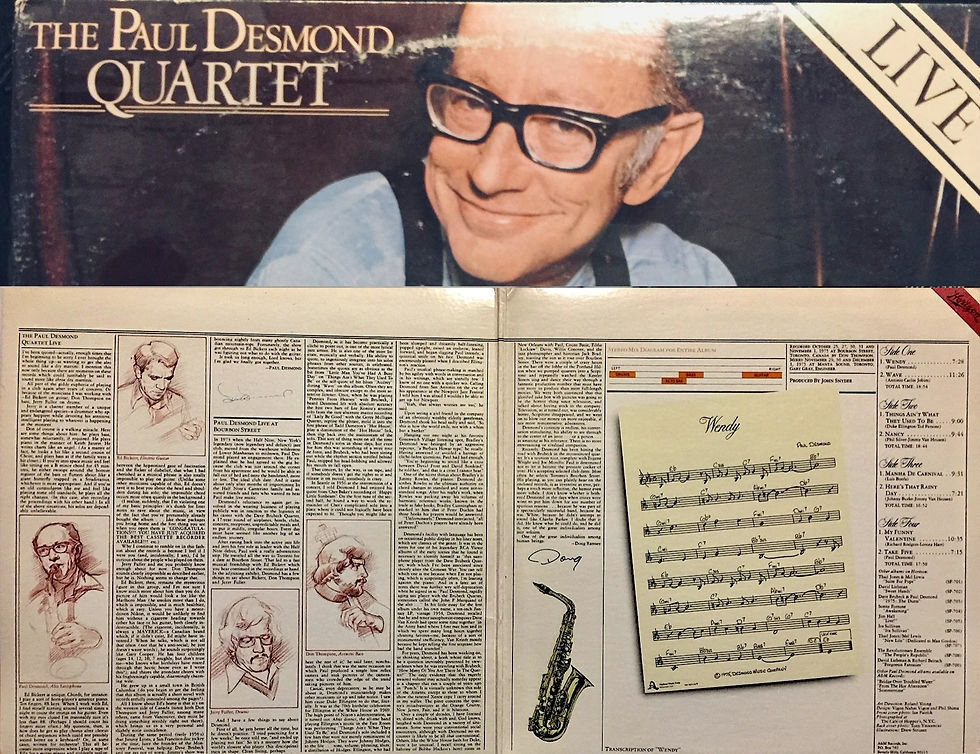
Jim Hall & Red Mitchell: Live in a club in 1978. Look at the freakin’ book that comes in the package! Transcribed solos! Complete discographies of both guys. Musical literacy is assumed.

Another Jim Hall record from the mid-seventies: Tons of liner notes, TWO song charts, a stereo mix diagram for one of the tunes, a graphic score for the same tune and even a transcription of one of Jim Hall’s solos! Also a transcription of one of Ron Carters’ solos written in bass clef! All part of the package. Does this happen today? Not that I know of.
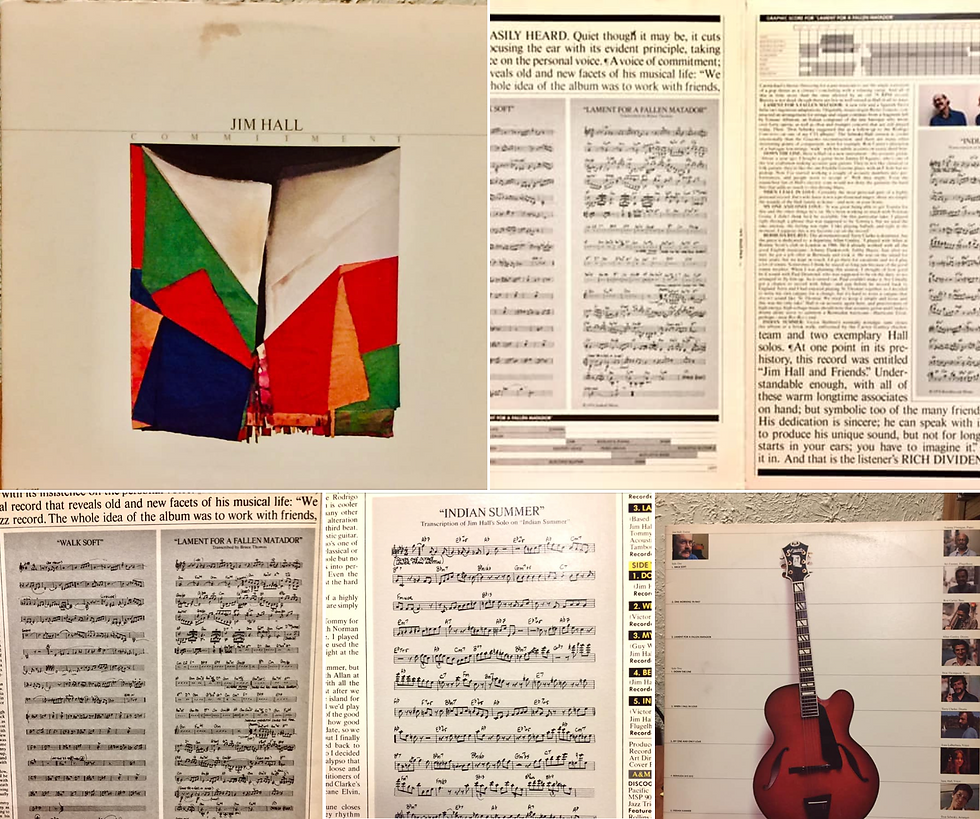
1975. Detailed liner notes. A transcription of one of the solos along with performance notes to the transcription. I have dozens of records from this era (and many are not Jim Hall records!). There are fake-sheets of tunes inserted in many of them. I suppose you could find all this online if you wanted to look for it - good luck - but the art-of-packaging is lost.
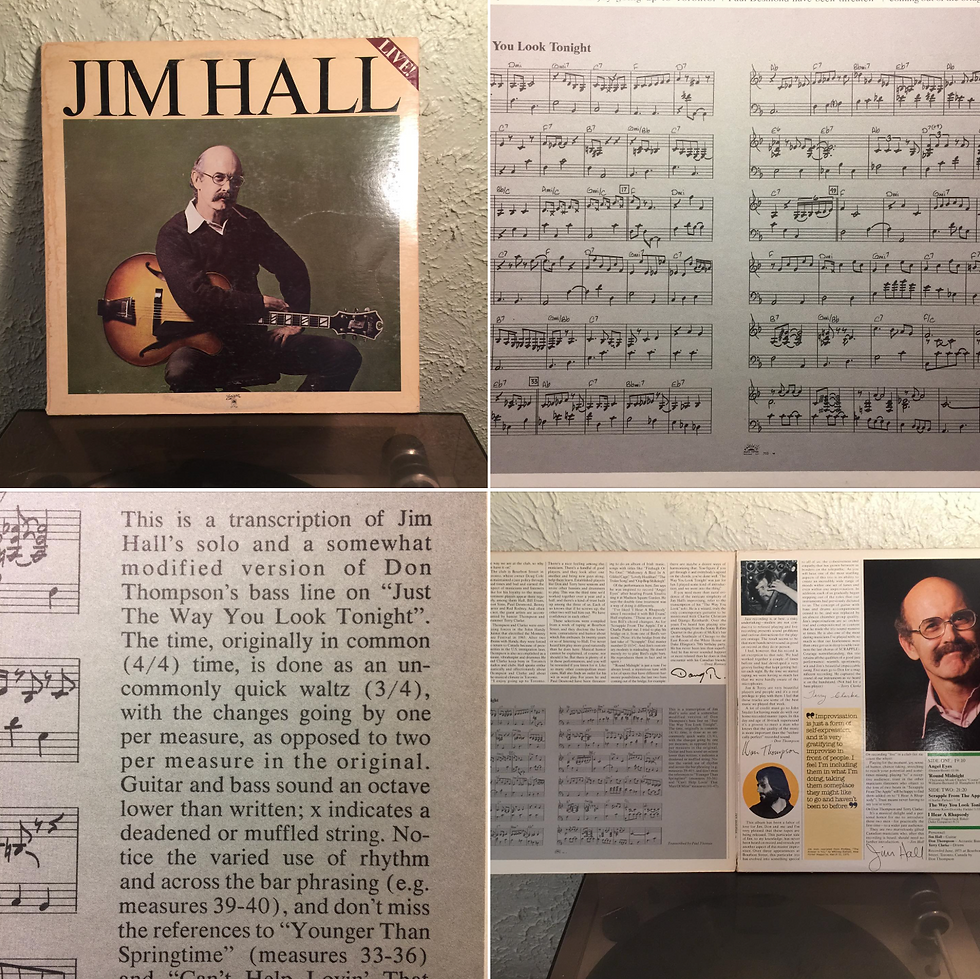
So in roughly 10 years time, the assumption of musical literacy in the culture-at-large was relegated to the packaging of niche jazz record labels.
Fast-forward to today and there is zero packaging - everything is streamed. Maybe you could find websites that sell and download sheet music transcriptions like this of guitar solos - let me know if you find one; the demand is so small there's no money-making reason for it.
In the ad copy it says,
Like in Les' composition here, which we invite you to try with a Guild guitar.
- as if most people seeing this ad could read Les' composition! The marketing guys obviously thought so.
All this implies the devolving of our culture in general, and the guitar subculture specifically. In a recent blog, I talk about a nose-dive that occurred in the '50's - Data From 680K Songs: A Gigantic Step Backwards.
There's another thing I find fascinating about this ad from 1967. Notice in the main copy, speaking of Les Spann's forthcoming, "Guitar Diaries" it says,
His "purple" chords are diminished, reds are minor ninths, blues are dominant sevenths, pinks are major sevenths, yellows are major, blacks are pure minor, whites are octaves.
Diminished, minor ninths, dominant sevenths, major sevenths, pure minor, octaves. How many people today have any idea what these words mean?
Furthermore, notice the association of chord types with colors. This suggests synesthesia. "Synesthesia" is the technical term for what I call a "cross-sensory experience." To explain:
When I was young I went through a phase where I was doing various hallucinogens.
A certain stimuli would trigger a different sense than normal. I would hear colors, see sounds and feel music with my hands.
The most common one was seeing sound. Years later, even after I had ceased all drug use, I had a waking vision; I saw notes coming out of my guitar as glowing, yellow-orangish spheres that went into people (through the solar plexus) who were listening.
I theorized that there was a mechanism in the brain that divided reality into sensory perceptions, much like a prism divides light into different colors. That mechanism can be screwed with or damaged. Drugs can do it; fasting, sleep deprivation, prayer and meditation of various kinds, trances, concussion, brain damage etc.
20 years after my formulation of this theory based on my hallucinogenic experiences (which ended in 1973, BTW), I came across a book by a neurologist named Richard Cytowic called, "The Man Who Tasted Shapes."
It was a book on synesthesia, which is the technical term for my phrase, "cross-sensory experience." The similarities between my subjective theory and the scientific discoveries detailed in the book were quite remarkable.
I wrote about how my hallucinogenic experiences even now inform my playing and teaching in See the Sound. Among other things, my fretboard diagrams color-code the intervals - and the colors are not random:
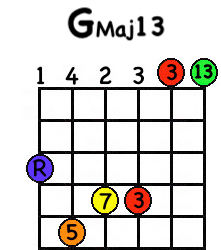
So I find it interesting that this ad from 1967 is using synesthesia-type language.
I'm not sure what inferences to draw from that, but it at least suggests to me that the marketers thought there was a certain level of intellect and curiosity that would cause the readers to want to investigate this Les Spann guy further, and by association, Guild Guitars.
How far we have fallen.
How About 5 Lessons?
The 5-Lesson Foundational Series teaches the Circle of Keys as an organizational mechanism by which you ensure that whatever you learn is drilled in every key in all possible positions. It also gives you a method to find any note, anywhere, without memorizing note names on every string. That is a beautiful thing!
Almost every lesson I teach presupposes these 5 lessons.
You can download the 5-Lesson Foundational Series right here with no further obligation or commitment:
Click the pic to access the download page
Check out Master Guitar School!
Sign up as a Master Guitar School site member and get access to over a hundred site-based lessons, a monthly newsletter that contains a brand-new lesson, and DEEP discounts on lesson series downloads - plus more!
For more information on site membership see: Why Become a Site Member?
Click the pic for Jay's Bio







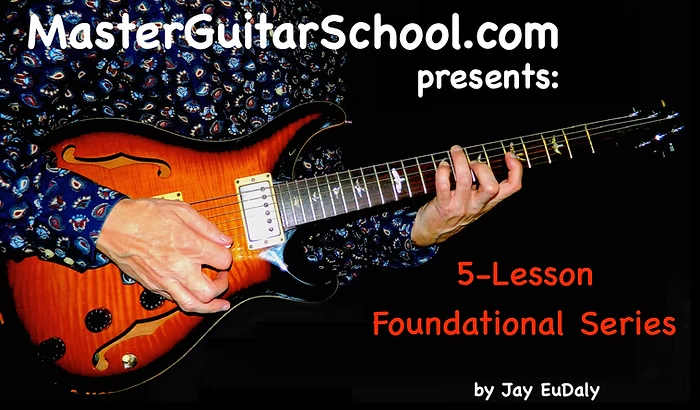



Comments